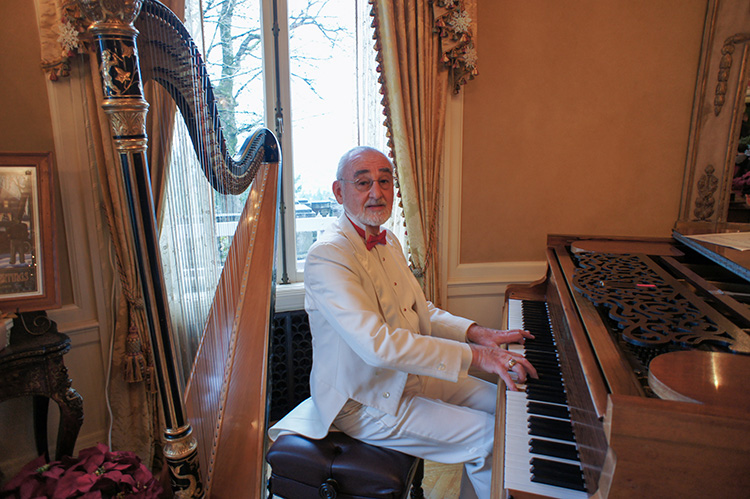
John A. DeRuntz Jr.
(ME ’59, M.S. MECH ’62, Ph.D. MECH ’65)
Transcending Space and Time Through Physics and Piano Music
Music has always been a passion for John DeRuntz Jr. He started playing the piano when he was a child, and his affection for classical music was ignited when he heard it for the first time on the radio a few years later.
That fascination ultimately led to a chance encounter that set him on his life’s path.
Midway through his senior year of high school in Chicago, DeRuntz was fulfilling his duty as a hall guard when he decided to slip into one of the school’s reception rooms to play the piano. Not long after, his homeroom teacher, Elmer Del Favero, caught him. Instead of scolding him, Del Favero was surprised that the mostly self-taught DeRuntz didn’t have a scholarship to study music—or any plans for college—after graduation.
“He said, ‘I’ve got an idea.’ He got me to enter into a mechanical drawing competition IIT held in those days,” DeRuntz remembers. “I got an honorable mention, which allowed me to take a test that turned out to be the IIT entrance exam.”
He did well enough to earn a scholarship to attend Illinois Tech for one year, which would roll over to the next year if he kept up his grades. DeRuntz credits former Professor Philip G. Hodge, his mentor, for helping him see his potential and, eventually, hiring him as a research assistant as he finished his graduate degrees.
After a short stint teaching as an assistant professor at the University of California, Berkeley, DeRuntz moved on to the Lockheed Palo Alto Research Laboratory in California, where he would develop his crowning achievement—the Underwater Shock Analysis code.
The work began with an idea proposed by a colleague, Thomas Geers, that a pressure wave scattered from a flexible submerged structure could be expressed by a boundary element equation for the fluid using only fluid and structure variables at the wet surface of the structure, and was an exact solution at both high and low frequency. The result was a family of Doubly Asymptotic Approximations (DAAs) that were exceptionally accurate over the entire frequency range.
DeRuntz developed that idea and combined the DAAs with the equations of motion for a structural finite element model to numerically simulate the effects on submerged and floating vessels due to underwater shock. The resulting software has been used extensively by the United States Navy and other government entities—both in this country and, later, by our allies around the world—to measure how shockwaves and sound affect submarines and surface ships. In 2007 he was awarded the Shock and Vibration Information Analysis Center's most prestigious honor, the Melvin L. Baron Award, for his work.
Throughout his scientific career, DeRuntz's passion for music and the piano never waned. He's composed more than 100 works, mostly for the piano, but for classical and folk guitar as well. Fifty of the piano pieces have been released on four albums, and his skills were showcased in 2011 when he performed at the Van Cliburn International Piano Competition for Outstanding Amateurs, where the best nonprofessional pianists in the world earn invitations. He is a member of the National Association of Composers/USA; piano teachers have been choosing his works for their students in annual recitals. Some of his music can also be heard on the internet. In addition, he is the author of two books of fiction, Tantum Ergo Makes Your Hair Grow and Other Things I Learned After Class, a coming-of-age story about getting through sixth grade in Catholic school, and Some of My Other Lives, a collection of unrelated short stories.
“Music and physics are both studies in space and time,” DeRuntz says, “and somehow my brain has the capability to work in space and time.”